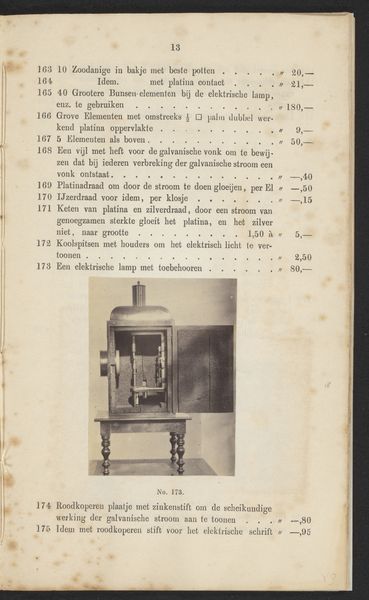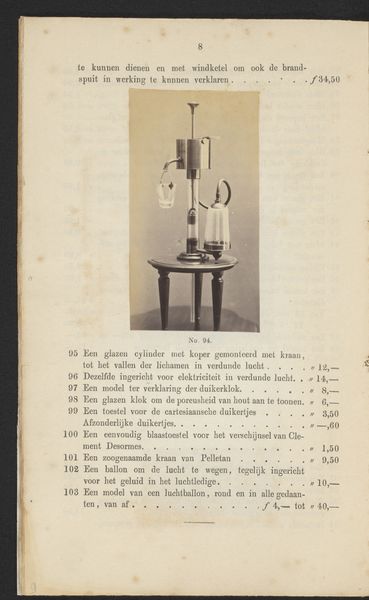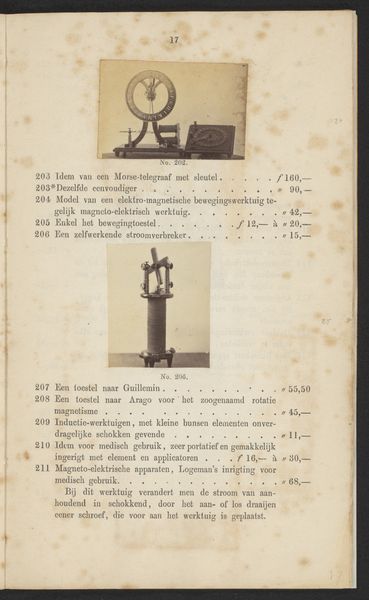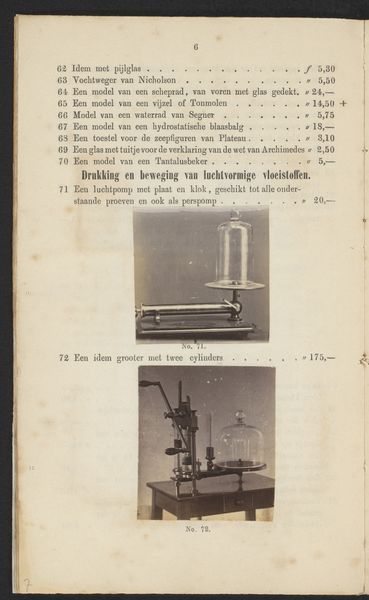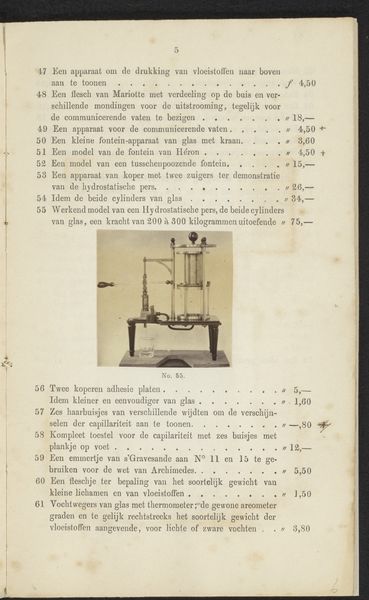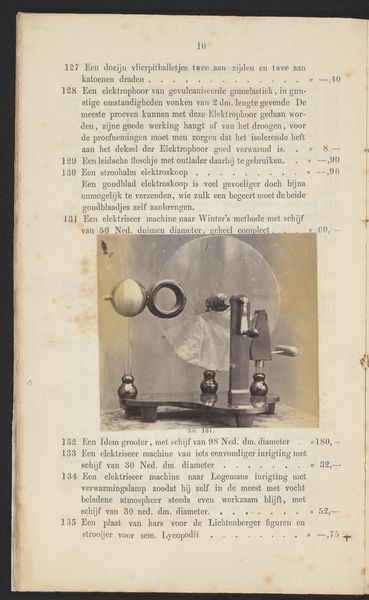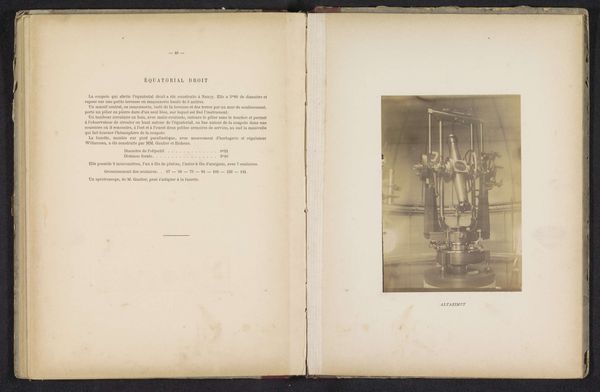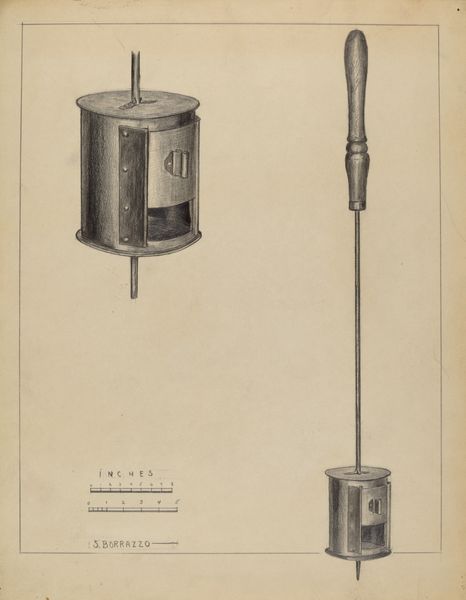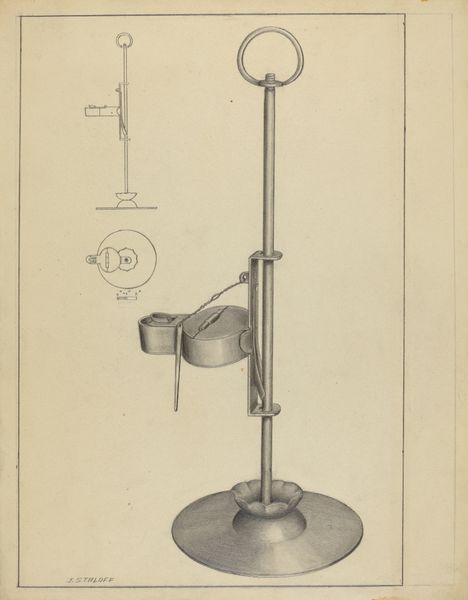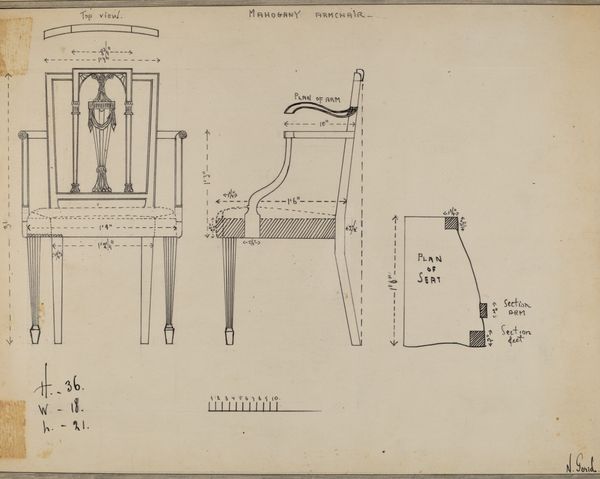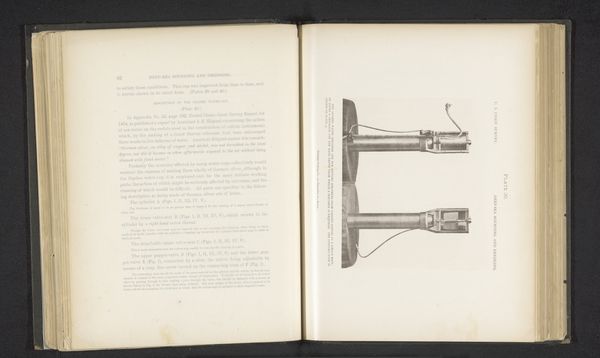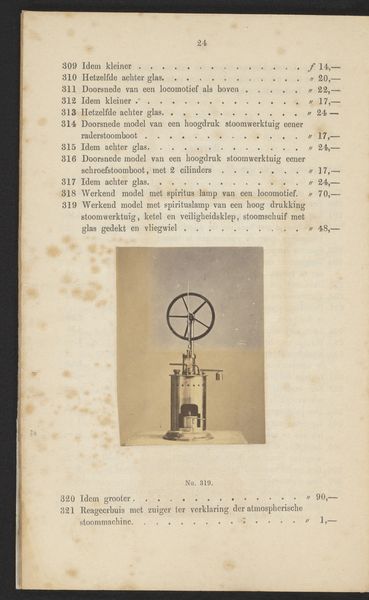
print, photography
dutch-golden-age
text
photography
historical font
columned text
Dimensions: height 222 mm, width 133 mm
Copyright: Rijks Museum: Open Domain
Curator: Indeed. Editor: I’m looking at "Twee afbeeldingen van een elektromagneet" by F.W. Funckler, made before 1867. It's a print, likely from a photographic process. It features two images of what appear to be scientific instruments, next to some descriptive Dutch text with prices. The whole thing has an antiquated, almost catalogue-like feel. I am interested to learn about these images and what function did they have? Curator: What you're perceiving as a catalogue feel is crucial. These weren't meant as 'art' in the way we often think. They were practical, utilitarian images intended for distribution. Note the presence of printed descriptions alongside, hinting at their function as part of a larger system, such as the spread of education and consumption. How does the medium itself—the print—factor into that? Editor: Well, the printmaking process allowed for mass production, so these images could be widely circulated amongst scientists or those interested in electrical experimentation. It seems less about unique artistic expression, and more about disseminating knowledge. Is this an accurate interpretation of materiality of that particular piece? Curator: Absolutely. Think about the labor involved. The photographer, the printer, the person setting the type. Consider how these images facilitated the spread of scientific ideas, enabling both amateur and professional scientific advancement across vast distances. They encouraged people to acquire this instrument, learn about electricity, perform their own experiments – engaging the economy. Editor: It's fascinating to consider the image as part of this wider industrial and educational system. It’s definitely changed the way I see these diagrams. The making and distribution of it is what makes it culturally significant. Curator: Exactly! Now we're seeing the process. By examining the means of production and the intent, we unlock layers of understanding far beyond simple aesthetics. Editor: I appreciate you sharing these insights. I wouldn't have initially thought about this print from that angle. Curator: Seeing it through the lens of materiality reveals so much more about its purpose and the world it inhabited.
Comments
No comments
Be the first to comment and join the conversation on the ultimate creative platform.
